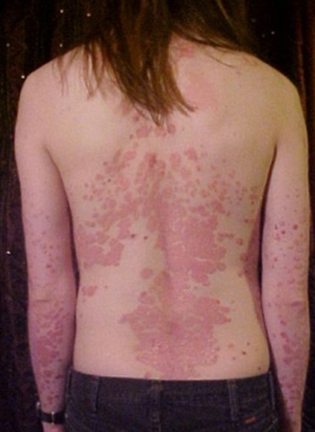Feeling the heat? Hereís how to beat it
by Carol Aloysius
Erratic changes in climate today, which have deviated from what we
expect has led to our bodies being exposed to extremes of climate.
Several theories have been put forward as to how these climatic changes
impact on our bodies and health. A few of them are scientific based and
many are rooted in superstitions and myths that can be traced back to
several centuries.
|

Dr Kolitha Karunadasa |
Consultant Plastic Surgeon, Colombo North Teaching Hospital. Dr
Kolitha Karunadasa drawing from his long experience explains in medical
terms how the body reacts and why to such changes. He debunks some of
the myths surrounding such changes in this intereview with the Sunday
Observer.
ExcerptsÖ
Q. The heat wave in Colombo and outside has led to some
concerns regarding its impact on the human body. What happens when we
get exposed to the sun?
A. Day time sun exposure is naturally unintentional and mostly
unavoidable in a tropical country such as Sri Lanka, where we are used
to engaging in many outdoor activities such as farming, construction,
sports and recreation, mostly without sun protection.
That means we are exposed is to ultraviolet radiation from the sun
and the heat generated from it. Ultraviolet Radiation (UVR) particularly
in extreme exposures can potentially cause both short term and long term
damages to health.
This has become a health problem as global climatic changes and ozone
depletion are probable underlying causes for this. What we get from the
sun is visible light, UVR and heat.
Solar UVR consist of three bands; UVA, UVB, and UVC. As the sunlight
passes, all the UVC and about 90 % of UVB is absorbed by ozone, water
vapor, oxygen and carbon dioxide. But UVA which reaches the Earthís
surface is largely unaffected, and the amount of UVB reaching the
surface is less than three percent.
Q. What are the health effects of UVR?
A. Exposure to excessive/ prolonged exposure to solar UVR can
cause acute and chronic effects on the skin, eye, immune system and
raise problems concerning regulating them. It also affects the
psychological well-being of the person.
Q. All these are negative impacts. Are there any positive
impacts on our bodies from sun exposure?
A. Sunlight particularly UVB stimulates the production of
vitamin D in the skin, and this provides approximately 90 % of the
Vitamin D requirements of human being.
 The
tropical countries receive more than enough sun exposure for this and
10- 15 minutes of exposure to face and upper limbs would be sufficient.
A. Vitamin D is also vital in maintaining calcium and phosphorus balance
in the body, The
tropical countries receive more than enough sun exposure for this and
10- 15 minutes of exposure to face and upper limbs would be sufficient.
A. Vitamin D is also vital in maintaining calcium and phosphorus balance
in the body,
Q. Who are most at risk of excessive sun exposure and why?
A. Children are at a higher risk of suffering adverse effects
of sun exposure than adults.
A majority of children love playing outdoor in the sun, but are
unaware of the harmful effects of UVR. The skin of a child is thinner
and more sensitive, hence relatively shorter sun exposure especially
mid-day can result in sun burn.
Q. What kind of health risks can develop as a result?
A. Epidemiological evidence demonstrates that frequent sun
exposure in childhood is associated with a high rate of melanoma in
later life. Melanoma is a serious form of skin cancer which is
aetiologically related to UVR exposure.
Q. What are the long-term effects of excessive sun exposure ?
A. Long- term exposure accelerates skin aging resulting in
skin wrinkles, dry and coarse skin due to progressive loss of skin
elasticity.
However, the most important fact to note based on epidemiological
evidence of chronic sun exposure, is that it can cause skin cancers.
Basal cell carcinoma is the commonest skin cancer.
Basal cell cancer is rarely fatal but causes ulceration,
disfigurement and removal needs an operation.
The second commonest type is the squamous cell carcinoma, which can
spread locally and also in to distant sites. Squamous cell cancers can
be fatal if untreated and neglected.
Malignant melanoma is a less common skin cancer but the fatality is
high. The incidence of malignant melanoma is increasing. Intermittent
and high exposure to UVR, fair skin and sun burn especially at early age
are significant risk factors in causation of malignant melanoma.
Other acute effects of UVR exposure are on the eyes - e.g. photo
keratitis and photo conjunctivitis. Particularly UVB exposure is
associated with cataract development in the long run.
It is also claimed that there is an immunosuppressive effect of the
UVR exposure as evident by the preliminary scientific evidence.
Consequently, sun exposure may enhance the risk of developing cancer and
contagious viral, bacterial, parasitic and fungal infections.
Q. How can we protect ourselves against these adverse effects
of sun exposure?
A. Damaging effects of UVR are mostly preventable by reducing
the instances of sunburn and cumulative UVR exposure, with simple
protective measures that are available.
It is the responsibility of parents to reduce harmful effects of the
excessive sun exposure especially in the case of children, because they
are at a higher risk to the damaging effects of sun exposure than adults
because of their sensitive skin.
Infants of less than 12 months of age should always be kept in the
shade. Shade, clothing and hats provide best protection for them.
A hat with a wide brim offers good sun protection for the face and
neck. Sunglasses with UVR protection (99-100%) will significantly reduce
the eye damage.
Tightly woven and loose-fitting cloths will provide protection to the
sun. Sunscreen should be applied to those parts of the body that are
remain exposed.
Children should be encouraged to take these simple precautions while
still allowing them to enjoy the time spend outdoors.
Shade should be used wisely especially when the UV rays are intense.
The sunís UVR are the strongest between 10 am and 4 pm and this mid-day
sun exposure should be minimized if possible. Keep yourself well
hydrated.
Q. Any other precautions that children and adults can take?
A. Public education on UV exposure is the need of the hour.
This can bring about a change in attitude and beahviour when exposed to
the sun. Sensible behaviour is relatively simple to incorporate and can
eliminate sunburn and heat stroke, which are often due to prolonged sun
exposure.
It has been claimed that four out of five cases of skin cancers can
be prevented by sensible behavior. Regular use of sunscreens could
reduce the incidence of skin cancers significantly in high risk areas.
Q. Since the heat wave is still continuing despite the rains,
tell us some ways of coping with this hot weather?
A. Two ways to cope with heat are by perspiring and breathing.
Q. Please elaborate
A. Sweating is the most effective natural means of combating
heat stress, with little or no change of body temperature. As long as
the sweating is continuous, humans can withstand increase in the
environmental temperature. But when the ambient humidity is high, the
sweat does not evaporate easily and tend to stay on the skin. Heat is
dissipated with the sweat as it takes heat from the skin surface during
the process of evaporation.
A person can feel comfortable as far as the sweat does not retain on
the body. They will feel uncomfortable and warmer in a humid environment
than in a relatively dry conditions.
Q. Is humidity a key factor?
A. Humidity is a huge factor. If you have tremendously high
temperatures and high humidity, a person will sweat but the sweat wonít
dry on the skin. Disorders due to heat most frequently occur with rapid
changes in environmental temperature, in low altitudes and in densely
populated urban areas. Elderly urban dwellers have died due to heat
because they are isolated and donít have access to air conditioning.
Obese people are at increased risk as are people on certain medications.
Those who are exercising or working in the heat and donít meet those
criteria, can also be at risk. People with chronic diseases and frequent
alcohol consumers also have problems with heat tolerance.
Q. Heat exhaustion and heat stroke are they the same? What are
the symptoms?
A. Heat exhaustion is a relatively common reaction to
significant heat. This is characterised by symptoms such as dizziness,
headache, and fainting with a considerable exposure to heat. This is
usually managed with rest, a cooler environment, and rehydration -
replacing water and electrolytes.
Heat stroke is a severe form often accompanied with dehydration, dry
skin, increased body temperature, confusion, and sometimes
unconsciousness and requires urgent medical attention to save life. As
the body temperature increases rapidly, the central nervous system and
circulatory system are impacted. Heat rash and muscle cramps are early
signs of people being overwhelmed by heat. If those arenít dealt with,
it can lead to more severe symptoms.
Q. Will fans help?
A. Not only does a fan Not work, it actually makes it worse.
Blowing hot air on a person will heat rather than cool them down. |

